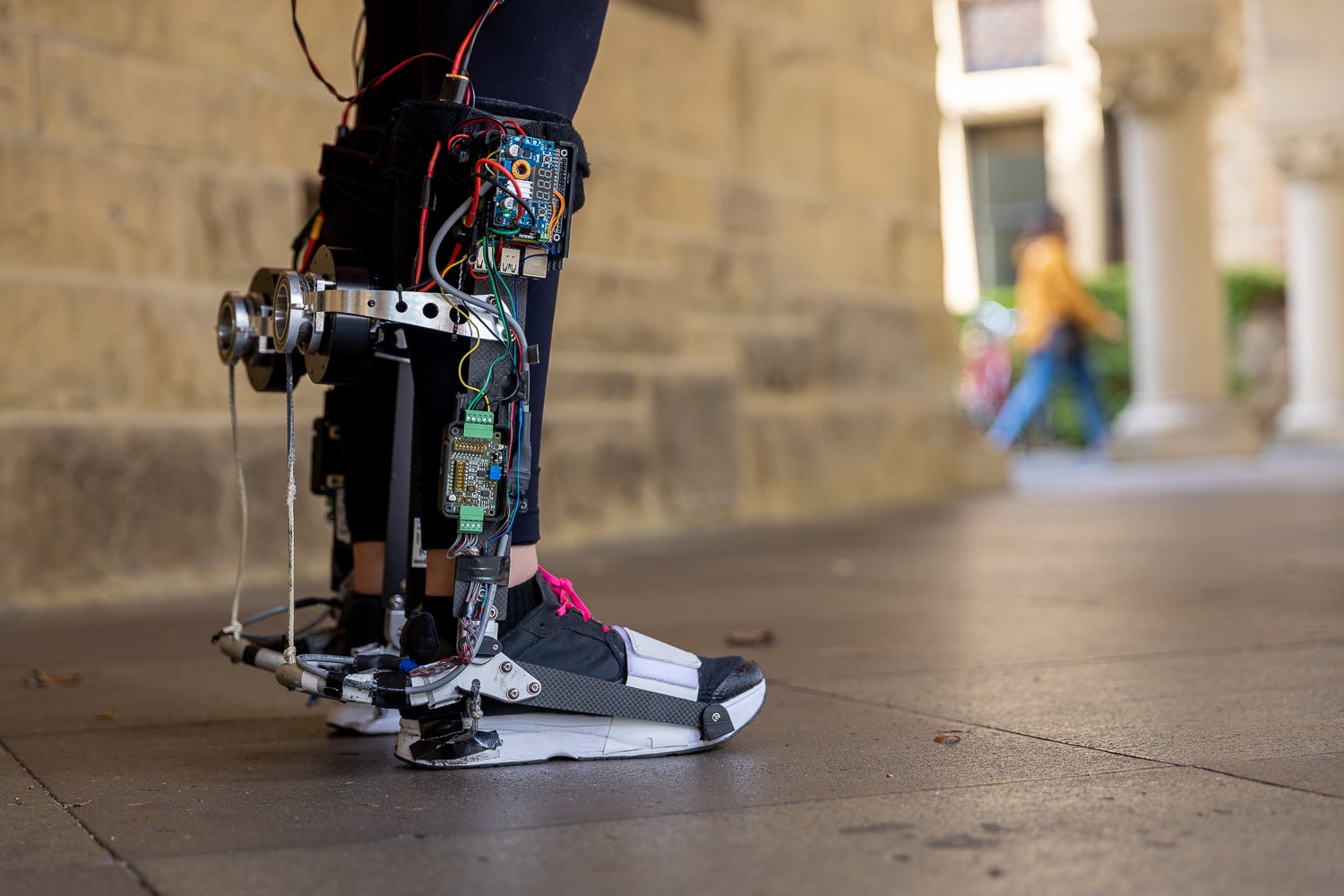Scientists build futuristic ‘exoskeleton boot’ that makes people walk faster
The exoskeleton can increase walking speed by up to 10 per cent, and is like removing a 10-kilogram backpack
A new exoskeleton ‘boot’ that can help people walk faster has been developed by researchers.
The boot, which looks like a cast with wires travelling up the back of the wearer’s leg, can increase walking speed by up to 10 per cent, and save 17 per cent in energy cost – the same as removing a 10-kilogram backpack.
The system works by using precisely timed electrical motors, which can impart a torque at the leg joint as the person walks.

There were challenges in developing this system effectively: A person’s walking speed varies widely over the course of a day, and each person’s gait – the specific way that they walk - is unique, so the robot needs to be able to adapt to the user and assistance must be calculated in a way that is specific to the wearer.
A person’s gait can be so unique that it could actually be used to identify someone.
Other difficulties arise when trying to adjust for how the person might change their behavior while wearing the boot – known as ‘human-in-the-loop’ optimisation.
The researchers, from the Department of Mechanical Engineering at Stanford, collected physiological data as feedback to manage how the boot best helps and added in an adaptive controller that responds to the changes in how a person walks throughout the day.
In the future, the robotic boot could be adapted to assist in other motions such as climbing stairs and navigating difficult terrain. The research has been published in Nature.
Exoskeletons have been used to achieve amazing feats in the past; a tetraplegic, who had lost control of all four of his limbs, was able to move agian using an exoskeleton controlled by his mind.
The experimental suit has the potential to improve patients’ autonomy and quality of life, as the man was able to walk, play computer cames, and more. The patient, a 30-year-old known only as Thibault, described it like being “the first man on the Moon”.
Join our commenting forum
Join thought-provoking conversations, follow other Independent readers and see their replies
0Comments